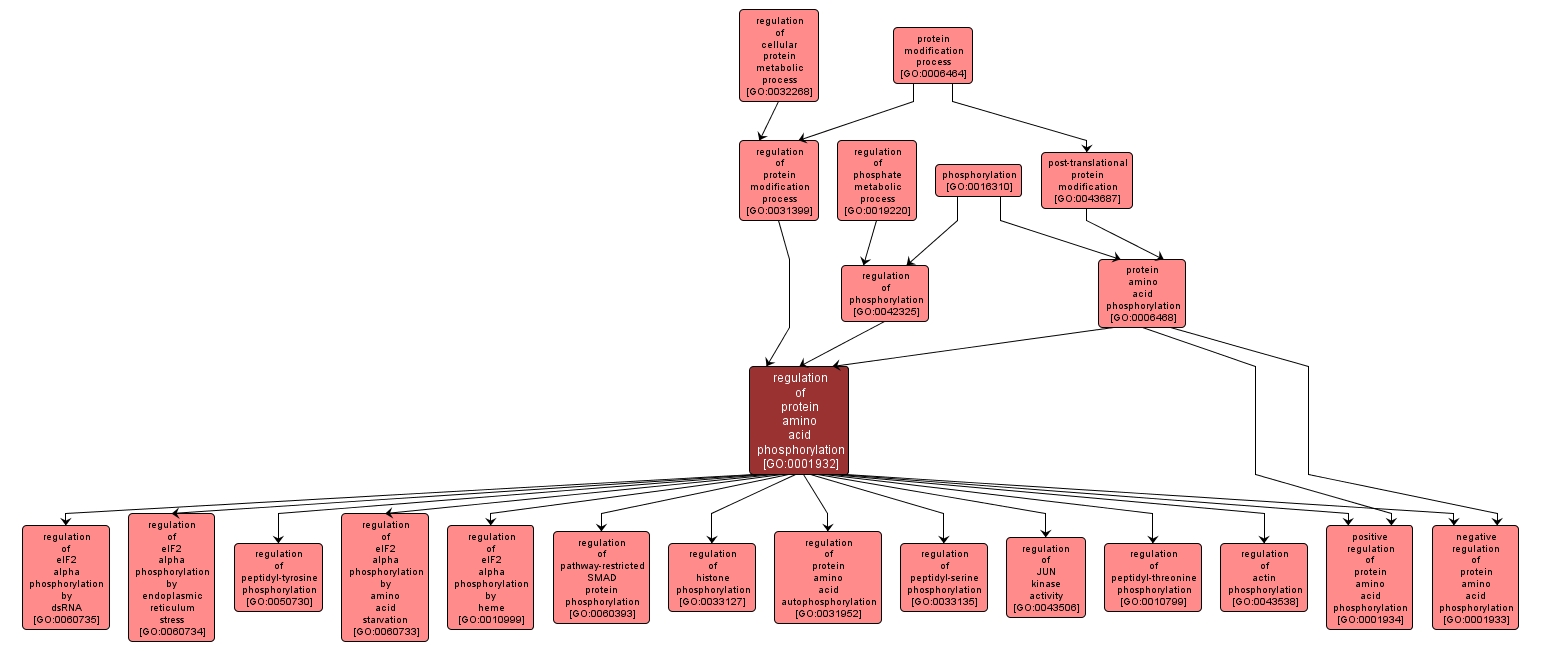GO TERM SUMMARY
|
| Name: |
regulation of protein amino acid phosphorylation |
| Acc: |
GO:0001932 |
| Aspect: |
Biological Process |
| Desc: |
Any process that modulates the frequency, rate or extent of addition of phosphate groups into an amino acid in a protein. |
|

|
INTERACTIVE GO GRAPH
|














